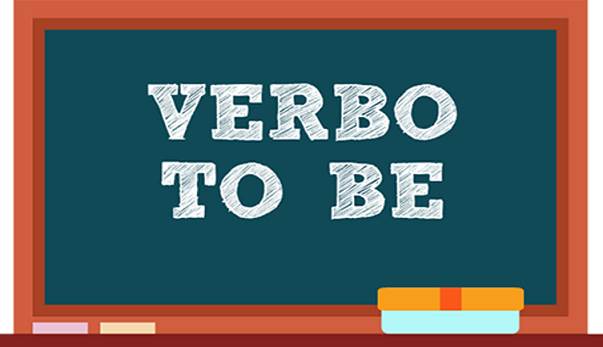El VERBO TO
BE EN FORMA AFIRMATIVA, NEGATIVA E INTERROGATIVA
A continuación, se dan las que para algunas personas son las fórmulas para la utilizar del verbo ¨to be¨ tanto en forma afirmativa, negativa e interrogativa.
Afirmativa:
Sujeto + verbo to be + complemento
Negativa:
Sujeto + verbo to be + not + complemento
Interrogativa:
verbo
to be + sujeto + complemento + ?
Ejemplos de
conjugación del verbo to be en oraciones
afirmativas, negativas e interrogativas.
|
Afirmativas |
Negativas |
Interrogativas |
|
I am in the school |
I am not in the school |
Am I in the school? |
|
You are a student |
You are not a student |
am I in the school? |
|
He is a Doctor |
He is not a doctor |
Is he a a doctor? |
|
She is a teacher |
She is not a teacher |
Is she a teacher? |
|
It is a pen |
It is not a pen |
Is it a pen? |
|
They are in New York |
They are not in New York |
Are they in New York? |
|
We are students |
We are not students |
Are we students? |
Oraciones Afirmativas
La primera parte de la oración es un pronombre o el sujeto de la oración seguido del verbo to be y el complemento de la oración.
I am (Yo soy o Yo estoy)
You are (Tú eres o Tú estás)
He is (Él es o Él está)
She is (Ella es o Ella está)
It is (Eso es o Eso está)
We are (Nosotros o nosotras somos, o Nosotros o nosotras estamos)
You are (Ustedes son o Ustedes están)
They are (Ellos son o Ellos están).
Por
ejemplo:
1. I am a student. (Yo soy un estudiante)
2. You are my friend. (Tú eres mi amigo)
3. She is pretty. (Ella es bonita)
4. We are good people. (Nosotros somos buena gente)
5. He is at the bank. (Él está en el banco)
6. It is a sunny day. (Es un día soleado)
7. You are online. (Ustedes están en línea)
8. They are very intelligent. (Ellos son muy inteligentes)
9. The apple is on the table. (La manzana esta sobre la mesa)
10. John is a baseball player. (Juan es un jugador de béisbol)
Oraciones Negativas
Para formar el negativo del verbo to be se debe agregar not después
del verbo:
I am not (Yo no soy o
Yo no estoy)
You are not (Tú no eres o Tú no estás)
He is not (Él no es o Él no está)
She is not (Ella no es o Ella no está)
It is not (Eso no es o Eso no está)
We are not (Nosotros o nosotras no somos, o Nosotros o nosotras no estamos)
You are not (Ustedes no son o Ustedes no están)
They are not (Ellos no son o Ellos no están).
Por
ejemplo:
1. I am not a good student. (Yo no soy un buen
estudiante).
2. We are not old friends. (Nosotros no somos viejos
amigos).
3. He is not a student. (Él no es un estudiante).
4. He pencil is not on the desk. (El lápiz no está
sobre el escritorio).
5. She is not absent from class today. (Ella no está
ausente en clase hoy).
6. They are not friends. (Ellos no son amigos).
7. The weather today is not good. (El clima no está
bien hoy).
8. The sky is not clear. (El cielo no está limpio).
9. They are not brothers. (Ellos no son hermanos).
10. The child is not in the garden. (El niño no está en el jardín).
Oraciones interrogativas
Para realizar preguntas con el verbo to be tenemos que escribir el verbo
antes que el sujeto o pronombre personal
Am I…? (¿Soy yo…? o
¿Estoy yo…?)
Are you…? (¿Eres tú…?
o ¿Estás tú…?)
Is he…? (¿Es él… ? o
¿Está él…?)
Is she…? (¿Es ella…?
o ¿Está ella…?)
Is it…? (¿Es eso…? o
¿Está eso…?)
Are we…? (¿Somos
nosotros…? o ¿Estamos nosotros…?)
Are you…? (¿Son
ustedes…? o ¿Están ustedes…?)
Are they…? (¿Son
ellos…? o ¿Están ellos…?)
Por ejemplo:
1. Am I a good student? (¿Soy un buen estudiante?).
2. Are we old friends? (¿Somos viejos amigos?).
3. Is he a student? (¿Él es un estudiante?).
4. Is the pencil on the desk? (¿El lápiz está
sobre el escritorio?).
5. Is she absent from class today? (¿Ella está ausente
en la clase hoy?).
6. Are they friends? (¿Ellos son amigos?).
7. Is the weather good? (¿El clima está bien?).
8. Is the sky clear? (¿El cielo está limpio?).
9.
Are they brothers? (¿Ellos son hermanos?).
10. Is the child in the
garden? (¿El niño está en el jardín?

Comentarios
Publicar un comentario